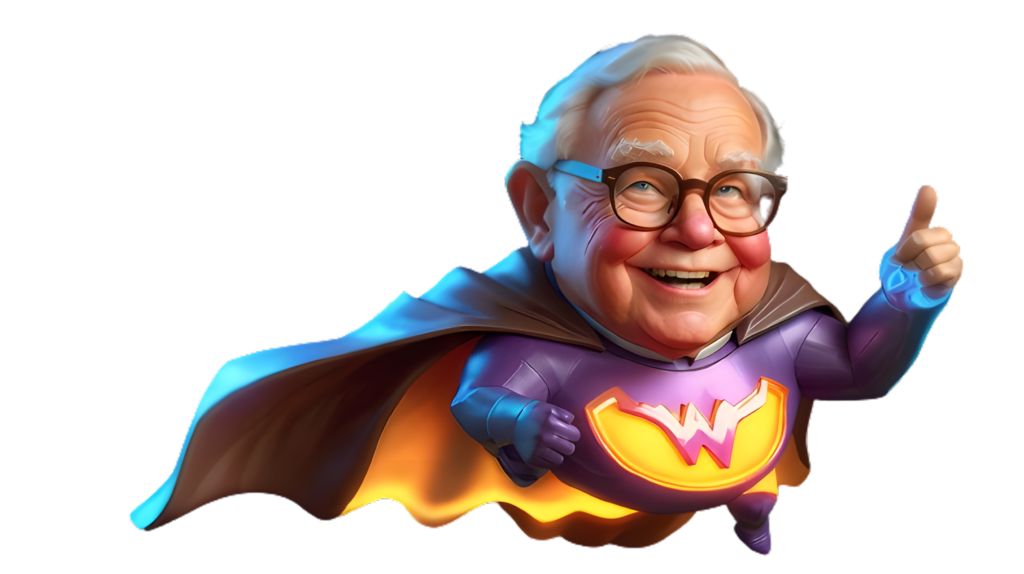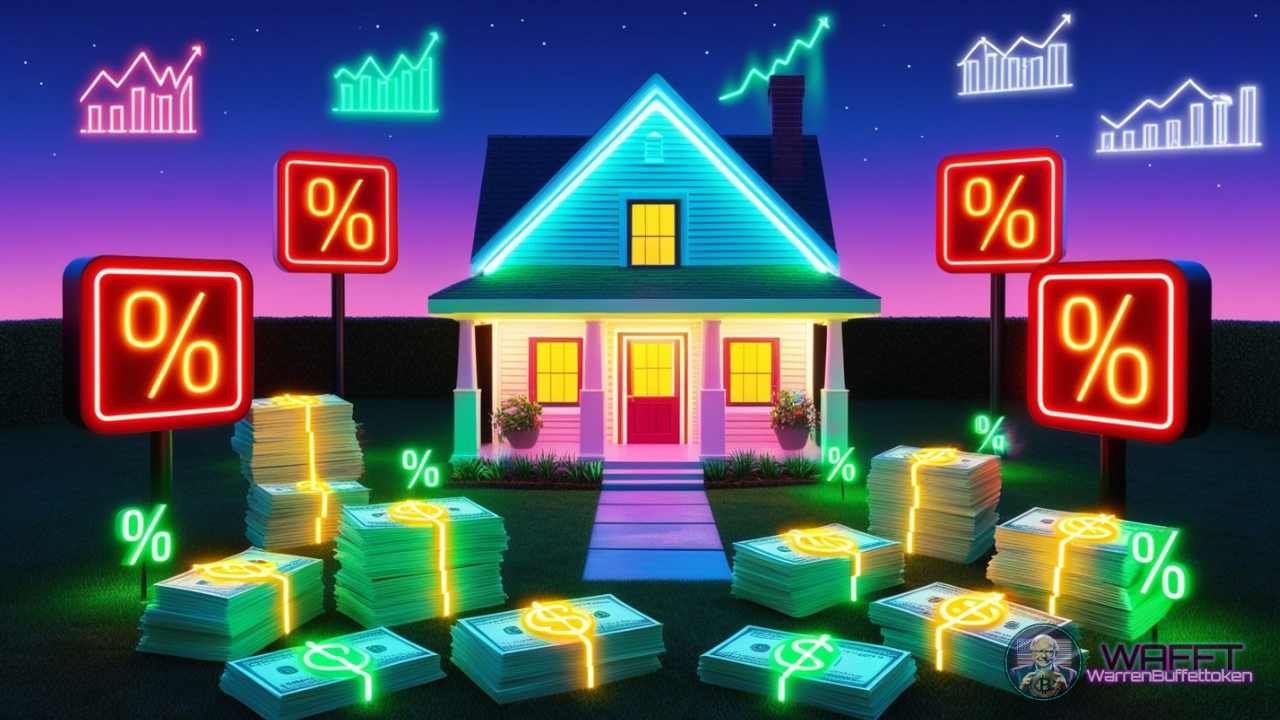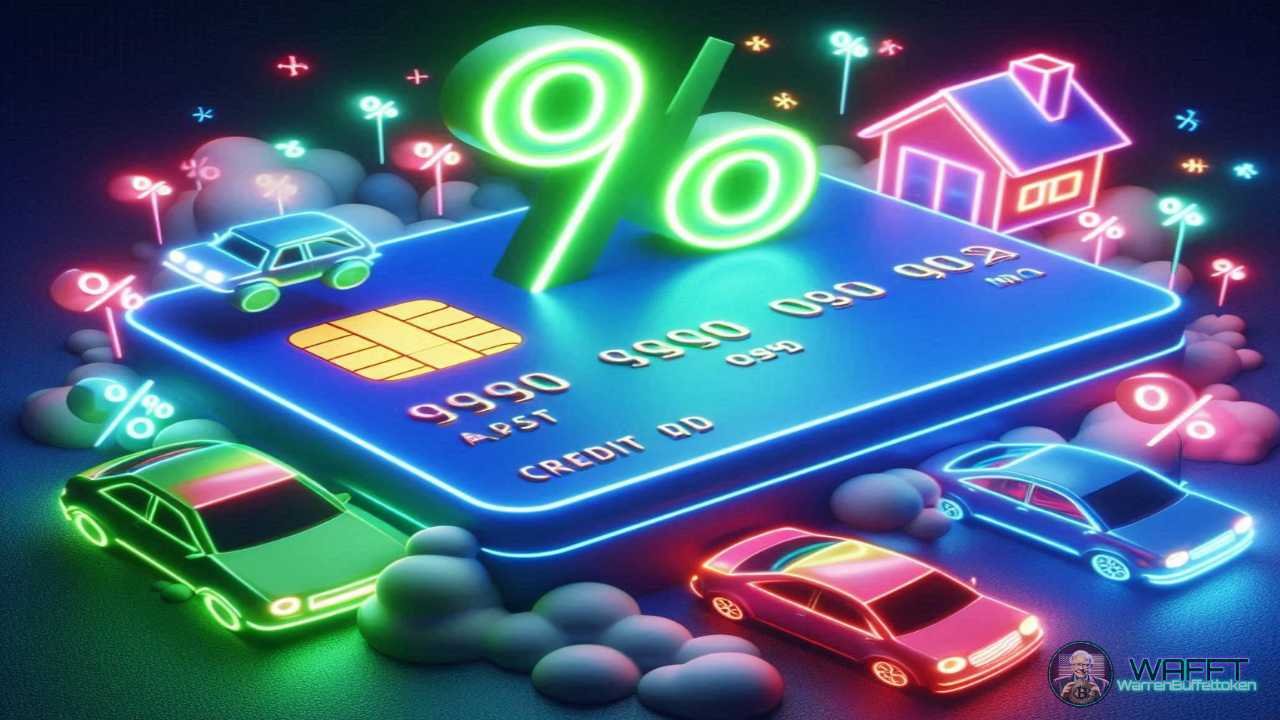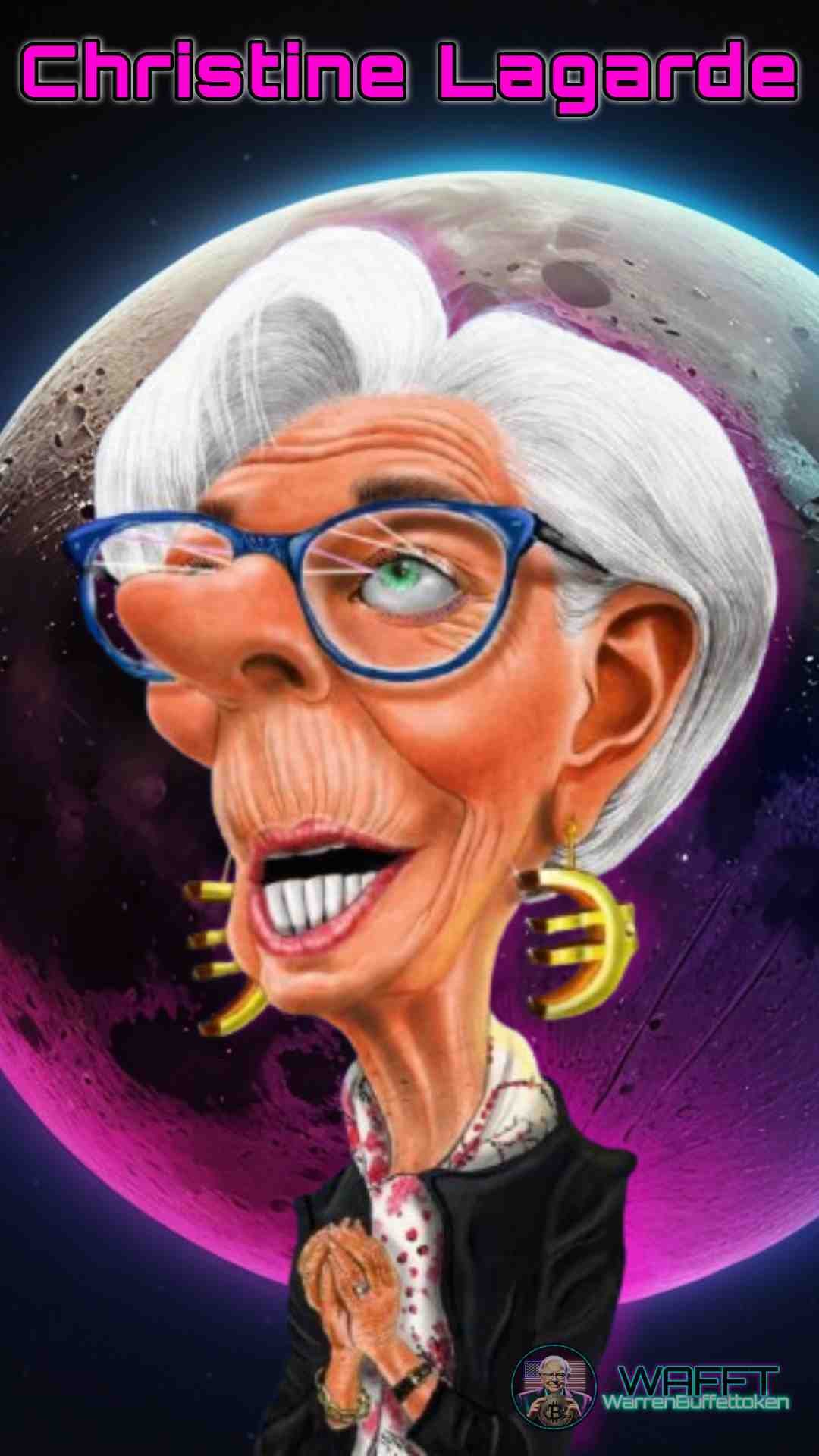Interest Rate:
The Thermometer of Money 🌡📊
Imagine money is like a race car, 🚗 and the interest rate is like the accelerator. If you push it too hard, the car can lose control, but if you don’t, it doesn’t even move. Interest rates are like that fine-tuning that keeps the economy on track.
But what exactly is an interest rate, and how does it affect our daily lives?
Let’s break it all down: what it is, how it’s calculated, who controls it, and why it sometimes goes up and sometimes it goes down. Here we go! 🚀

What Are Interest Rates? 🤔
Interest rates are basically the price you pay to borrow money, or if we look at it from another angle, the reward you receive for lending money. It’s like the «rent» you pay for using someone else’s money or what you get paid for letting them use yours. 🎯
Let’s Give a Clear Example 💡
Imagine that you ask the bank for a loan of $1,000. The bank charges you interest for lending you that money, let’s say 5%. In the end, in addition to paying back the original $1,000, you will have to pay an extra $50 for the interest. That is, you pay $1,050 in total.
On the other hand, if you are the one who deposits your money in the bank (or invests in bonds, for example), the bank pays you interest for using that money. It’s like you loaned money to the bank! 🏦
How Do They Work? 🏦
Interest rates go up or down depending on the supply and demand for money and the decisions of central banks. If the economy is going too fast, central banks raise rates to cool things down. And if things are going too slowly and they need to stimulate spending, they lower rates to make it cheaper to borrow and spend. 🎢
How Are Interest Rates Determined? 🎛️
Interest rates are not a magic number that appears out of nowhere. They are the result of various forces and decisions in the financial system. And the main actors behind these rates are the central banks of each country, such as the Federal Reserve in the United States, the European Central Bank or the Bank of Japan.
Central banks and monetary policy:
Central banks are the ones that control the basic interest rates that affect the entire economy. If the economy is growing too fast, they can raise rates to curb spending and control inflation. If the economy is in recession, they lower rates to stimulate credit and consumption.
Supply and demand for credit:
As with any other good or service, interest rates are also determined by supply and demand. When many people and companies want to borrow, banks can raise rates because there is more demand. If there is little interest in borrowing, they lower rates to encourage people to borrow.
Inflation:
This is another big factor. Central banks adjust interest rates based on inflation. If prices rise too quickly, banks raise rates to curb consumption and investment, in order to control inflation.
Confidence in the economy:
If investors believe the economy is strong and stable, rates may be lower because the risks are lower. But if there is a lot of uncertainty (for example, in a financial crisis or during a pandemic), rates may rise.

Types of Interest Rates 🧐
Interest rates aren’t just an abstract number; they’re a powerful tool that directly influences your finances. Depending on the type of interest rate, the cost of your loan or the return on your savings can vary greatly. Knowing these terms well will help you make better financial decisions and avoid unpleasant surprises! 🎯
1. Active Interest Rate 🏦💰
The active interest rate is the one you are charged when you borrow money, whether for a mortgage, a personal loan, a business loan, or even when you use your credit card. In short, it is the cost of borrowing money.
How does it work?:
When the bank or financial institution gives you a loan, it charges you a percentage of the amount borrowed as compensation for the risk it assumes and the time it takes until you pay back the money. This percentage is the active rate.
Example:
if you borrow $10,000 with an active interest rate of 5%, you will end up paying $10,500 (the principal plus the interest). The higher the rate, the more expensive the loan will be.
What is it used for?:
It is used in almost any type of credit, from mortgages to student loans and credit cards.
2. Passive Interest Rate 💸💼
How does it work?:
When you leave money in the bank, they use that money to make loans to other people or companies, and they reward you with a small interest rate.
Example:
if you have $1,000 in a savings account with a passive interest rate of 2%, at the end of the year you would have $1,020. It is not much, but it is better than nothing.
What is it used for?:
It applies to savings accounts, certificates of deposit, and bonds.
3. Nominal Interest Rate 📄💡
The nominal rate is the rate that appears in loan, credit or investment contracts. It is the advertised or «at-a-glance» rate, but it does not take into account factors such as inflation or additional costs associated with the loan.
How does it work?:
If you are offered a loan at 4%, that 4% is the nominal rate. However, it may not reflect the real cost of the loan, because it does not consider what you could lose due to inflation or other charges such as bank fees or insurance.
Example:
If you sign a mortgage with a nominal rate of 5%, that is the percentage you will pay each year for the money borrowed, but it does not represent the real value of the money after inflation or other hidden costs.
What is it used for?:
It is what is published in credit offers, mortgage loans and credit cards.
4. Real Interest Rate 📉💪
The real interest rate is much more useful than the nominal rate because it takes inflation into account. It tells us the real value of the money we earn or lose on an investment or loan.
How does it work?:
The formula for calculating the real interest rate is simple:

If you have a nominal rate of 4% and inflation is 2%, your real rate is 2%. This means that even though you are technically paid 4% on your savings, in terms of purchasing power, you are really only earning 2%. The real rate is essential to understanding how much you are earning or losing relative to inflation.
What is it used for?:
It is a key tool for evaluating investments, especially in times of high inflation. It is also used to calculate the true cost of a loan.
5. Fixed Interest Rate 🔒📅
A fixed interest rate means that the percentage you pay or receive remains constant throughout the term of the loan or investment. This means that regardless of what happens in the economy, your rate will not change.
How it works:
If you take out a mortgage loan with a fixed rate of 3%, you will pay exactly 3% for the entire life of the loan, regardless of whether market interest rates go up or down. The same goes for fixed-rate certificates of deposit.
Advantages:
It offers you stability and predictability, since you know exactly how much you will have to pay or earn at any given time, with no surprises. It is ideal if you want to protect yourself from possible rate increases in the future.
What is it used for:
It is used in long-term financial products such as mortgages, fixed-term loans or bond investments
6. Variable Interest Rate 🎢📊
Unlike a fixed rate, a variable interest rate can change over time depending on market conditions. This rate is usually linked to a benchmark, such as the Euribor in Europe or the LIBOR internationally.
How does it work?:
At first, you might have a lower rate than a fixed-rate loan, but over time it can go up or down depending on how general interest rates go in the market. If rates go up, your monthly payment will go up too, and vice versa.

Advantages and disadvantages:
Variable rates usually start out lower, which can be attractive, but they also carry the risk of going up unexpectedly, which could cause your payments to increase. It’s like a financial roller coaster! 🎢
What is it used for?:
It’s common in variable-rate mortgages, long-term loans, and some types of investments.
7. Prime Rate 💼⭐
The prime rate is a lower rate that banks offer to their most reliable customers or their best borrowers. These rates are applicable to people or companies with excellent credit history, which represent a lower risk for the financial institution.
How does it work?:
Imagine that a company with an impeccable payment history and solid finances asks for a loan. The bank can offer it a lower prime rate because it knows that the risk of default is minimal. It is a reward for being a good customer.
What is it used for?:
It is common for large companies or individuals with high income and low credit risk.

Why Are Interest Rates So Important? 🌍
Interest rates affect everything and everyone. From mortgages to student loans to the credit card you use to buy things. They even affect how much your savings earn in the bank!
Here are a few reasons why interest rates are crucial:
Impact on nsumption:
If interest rates are low, borrowing is cheaper, which encourages people to spend more. This boosts the economy, because people buy houses, cars, and appliances. But if rates are high, people and businesses spend less, because it’s more expensive to borrow money.
Inflation and economic stability:
Central banks use interest rates as a tool to control inflation. They raise rates when they think the economy is overheating and lower rates to boost growth in times of recession.
Financial markets:
Interest rates directly influence the stock and bond markets. When rates rise, stock prices can fall, because companies have to pay more for their loans. In addition, investors prefer to invest in safe bonds with a higher interest rate rather than riskier stocks.
Key Figures in the World of Interest Rates 🧠📜
Behind interest rates are some of the most powerful figures in the economic world. These figures have the power to influence the course of the global economy with just a few words.
Here are some of the most important ones:
Alan Greenspan:
He was the chairman of the US Federal Reserve from 1987 to 2006. He is known for his focus on keeping interest rates low in the 1990s, which helped prolong one of the longest economic expansions in US history.
Paul Volcker:
Another former Federal Reserve chairman, known for dramatically raising interest rates in the early 1980s to combat the sky-high inflation that was plaguing the United States. Although his policies caused a short-term recession, they were effective in stabilizing the economy.
Mario Draghi:
He was president of the European Central Bank from 2011 to 2019 and played a crucial role in the sovereign debt crisis in Europe. “We will do whatever it takes” was one of his famous statements, and he did indeed lower interest rates and launch an asset purchase programme to save the Eurozone.
Christine Lagarde:
Current president of the European Central Bank since November 2019. Previously she was managing director of the International Monetary Fund (IMF) from 5 July 2011 to 16 July 2019. She has had to deal with an environment of ultra-low interest rates and expansionary monetary policies to try to keep the European economy afloat following recent crises.

The Effect of Interest Rates in Different Countries 🌎
Interest rates are not the same in every country, as each country has its own central bank and particular economic conditions.
Here are some examples of how interest rates work in different economies:
United States 🇺🇸:
The Federal Reserve (Fed) is in charge of setting the benchmark interest rate. In recent times, the Fed has kept interest rates low to stimulate the economy, especially after the 2008 financial crisis and during the COVID-19 pandemic.

Japón 🇯🇵:
Japan is famous for its ultra-low or even negative interest rates. The Bank of Japan has kept interest rates near zero for decades in an attempt to combat deflation and stimulate economic growth.
Brazil 🇧🇷:
In emerging economies like Brazil, interest rates tend to be much higher due to inflation and economic instability. Central banks in these countries often have to keep rates higher to attract foreign investment and control inflation.
European Union 🇪🇺:
In the Eurozone, the European Central Bank has kept rates low or even negative in some cases. This is part of its strategy to stimulate economic growth in a region that has faced several crises, from sovereign debt to COVID-19.
The Future of Interest Rates: Where Are We Going? 🔮
Interest rates are a reflection of global economic conditions. In recent years, we have seen a trend towards lower or even negative rates in several advanced economies. This raises many questions about how central banks will handle future economic crises and inflation.
Also, with the emergence of new technologies such as cryptocurrencies and fintech, we could see changes in how central banks manage interest rates in the not-so-distant future.
Conclusion: Interest Rates, the Key to Everything 💡
Interest rates are the heartbeat of the economy. They affect everything from your mortgage to global investments. Although they may seem complex at first, understanding them is crucial to having a clear idea of how the financial world works.
So the next time you hear about rates going up or down, you’ll know exactly what it means and how it could affect you! 🎯


